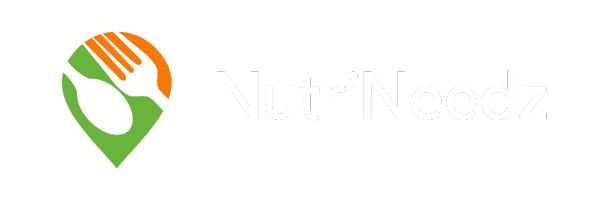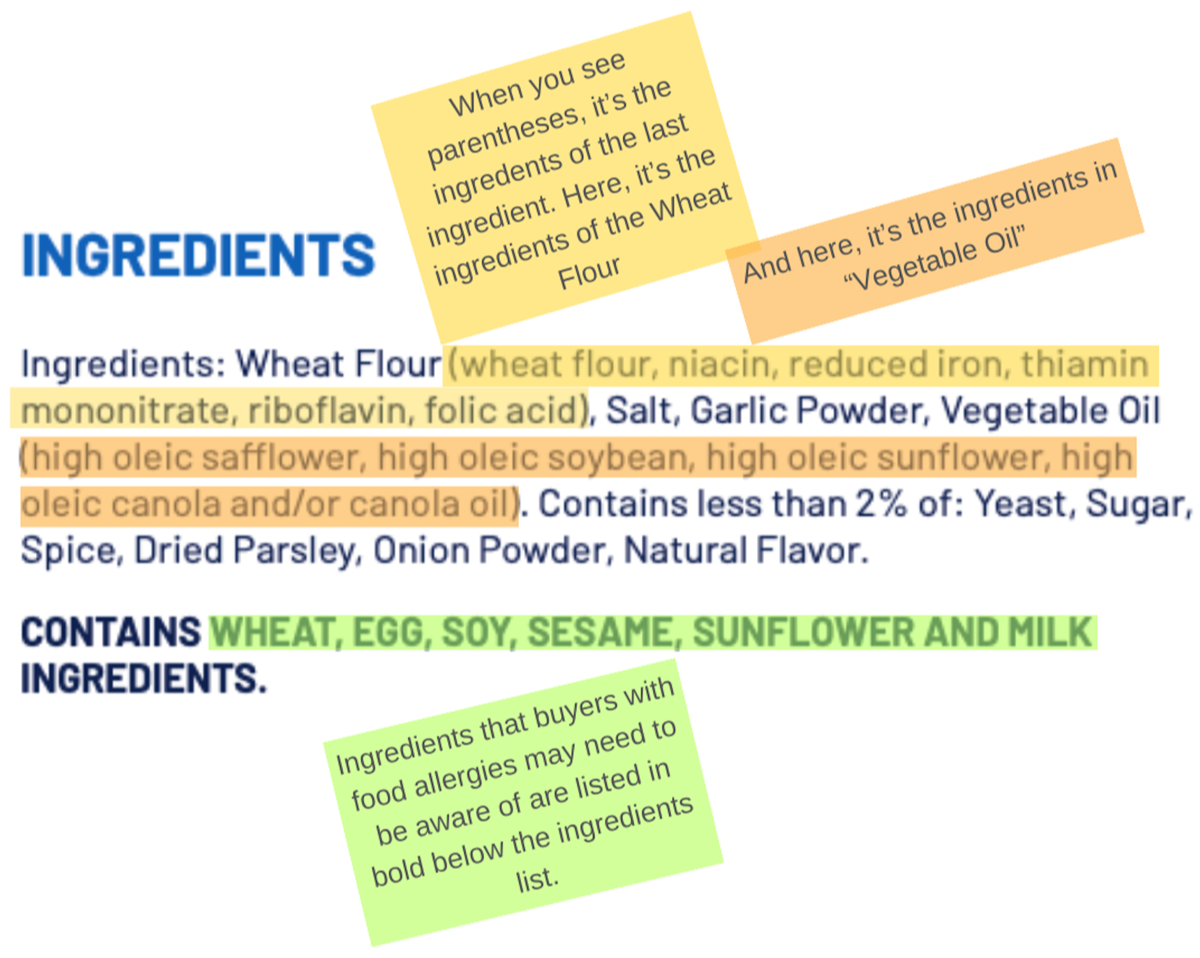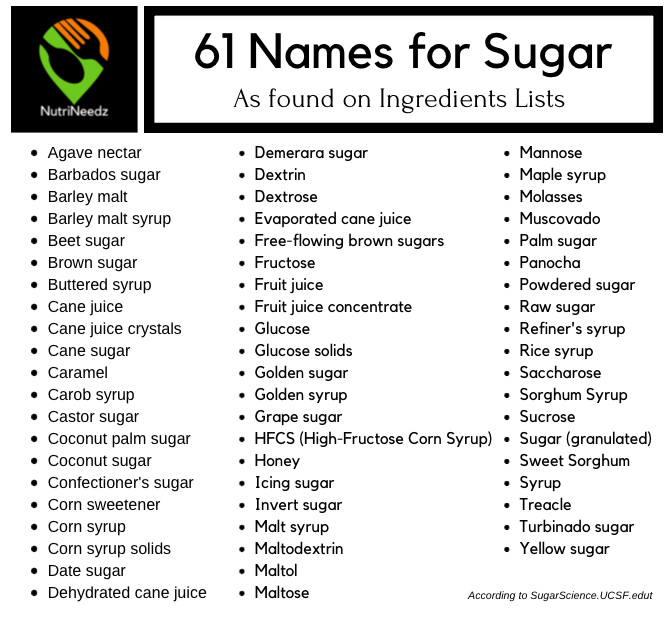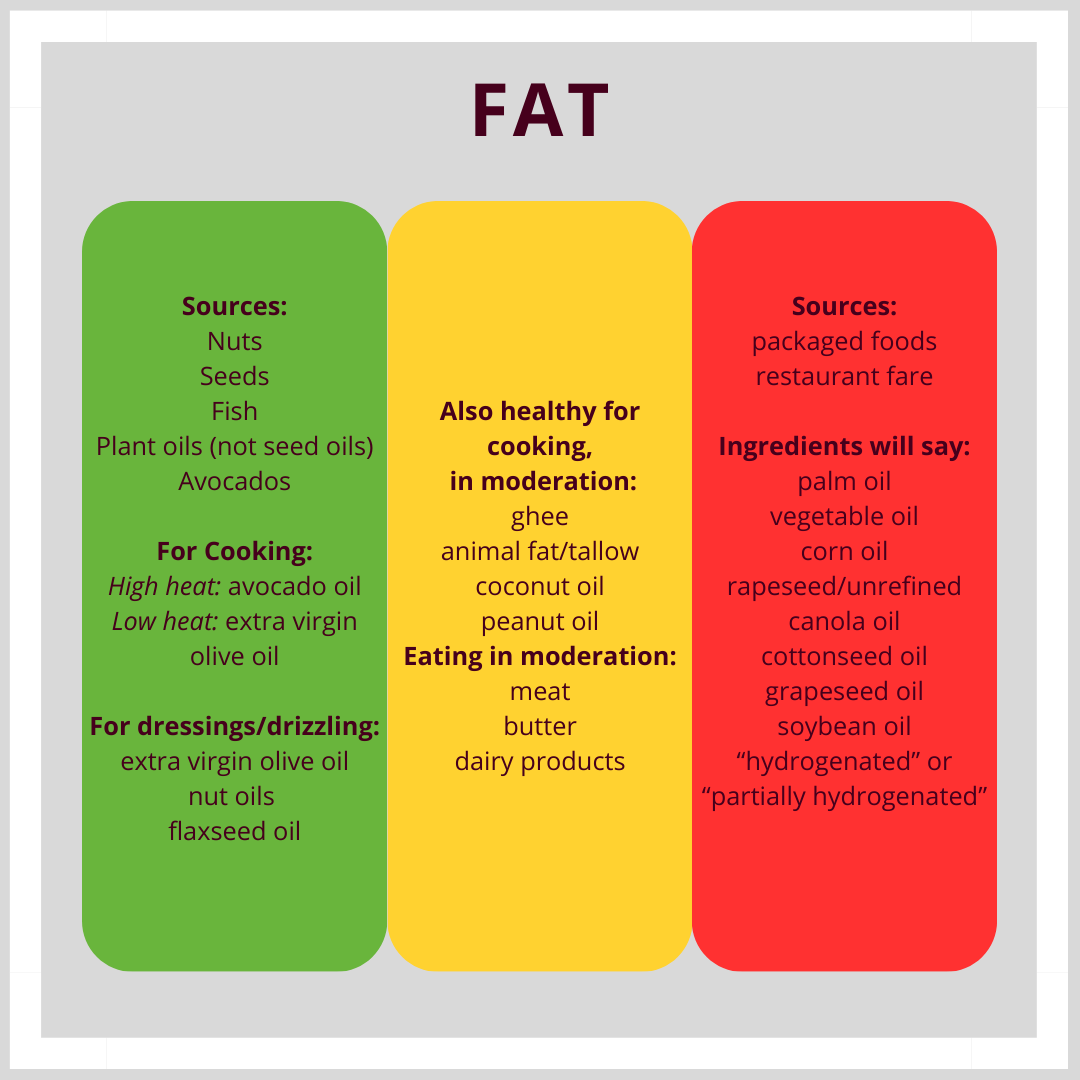
How to Read an Ingredients List on Packaged Food
Most of the food we buy should be food that doesn't need an ingredients list. What's in that bag of potatoes, I wonder? What about that package of nuts? That is what is meant when you hear the term "whole foods" - food that is eaten as it is found in its natural, whole form. It hasn't been separated into parts and had parts removed or added. It's whole. And it's healthier that way.
If a food product contains more than one ingredient, it is required to have an ingredients list. Obviously, the fewer ingredients it has, the better. Fewer ingredients is a good thing, but does not always equal healthy, however. For example, potato chips are not healthy, but often only have three ingredients: potatoes, fat (oil) and salt.
Ingredients are listed in order of what it has the most of, so keep that in mind.
If a food product contains more than one ingredient, it is required to have an ingredients list. Obviously, the fewer ingredients it has, the better. Fewer ingredients is a good thing, but does not always equal healthy, however. For example, potato chips are not healthy, but often only have three ingredients: potatoes, fat (oil) and salt.
Ingredients are listed in order of what it has the most of, so keep that in mind.

As a general rule, look for short lists of ingredients.
Also look for ingredients that you know. That can be tricky, so if you want to just stop reading here, it would be great if you use this rule:
Don't buy it unless you could buy each of the ingredients in the grocery store.
However, that is very difficult to do unless you get very dedicated to a whole food lifestyle.
When food is separated into parts (no longer the whole food that doesn't need a label), it is known as "Processed Food". A whole food is taken, broken into parts, and some of the parts are used to make something else. Unfortunately, the most nutritious part is what is usually removed. The most common thing that is removed from processed food is the fiber, while the most common additions to processed food are sugar, fat, and salt, all three of which have addictive properties to keep you coming back for more. All three also have serious health ramifications for eating too much of them. So it's very important to know what you're eating. Another thing that you need to know is that ingredients lists won't just say "sugar, fat, salt". Each one of these has a multitude of names depending on the source and type.
Also look for ingredients that you know. That can be tricky, so if you want to just stop reading here, it would be great if you use this rule:
Don't buy it unless you could buy each of the ingredients in the grocery store.
However, that is very difficult to do unless you get very dedicated to a whole food lifestyle.
When food is separated into parts (no longer the whole food that doesn't need a label), it is known as "Processed Food". A whole food is taken, broken into parts, and some of the parts are used to make something else. Unfortunately, the most nutritious part is what is usually removed. The most common thing that is removed from processed food is the fiber, while the most common additions to processed food are sugar, fat, and salt, all three of which have addictive properties to keep you coming back for more. All three also have serious health ramifications for eating too much of them. So it's very important to know what you're eating. Another thing that you need to know is that ingredients lists won't just say "sugar, fat, salt". Each one of these has a multitude of names depending on the source and type.
Sugar
Added sugar is not necessary. Some foods have sugars in them naturally. These are not something you should be concerned about, though. It's the sugar that is added that you want to avoid. Unless you want to memorize the very long list of aliases for sugar, the quickest way to check for added sugar is by looking at the nutrition label. There's a line for grams of sugar, but then there's another line for "Added sugars" below that, if there are any. It's these "Added sugars" that you should be wary of. In any given day, you should only be getting 25g (or less) for women, 38g (or less) for men.
The sugars in foods such as fruit and complex carbohydrates should not be avoided, however. These are not "Added sugars" because they are not added; they are part of the carbohydrate section of the label for this reason. These foods contain other nutrients, such as protein or fiber that help slow digestion of the sugars. If there's no ingredients list, such as with a piece of fruit, eat it and don't worry about it! If you are diabetic, pre-diabetic, or overweight, see the appropriate article for tips on managing that.
If there is an ingredients list, watch out, because added sugar has a lot of names.
The sugars in foods such as fruit and complex carbohydrates should not be avoided, however. These are not "Added sugars" because they are not added; they are part of the carbohydrate section of the label for this reason. These foods contain other nutrients, such as protein or fiber that help slow digestion of the sugars. If there's no ingredients list, such as with a piece of fruit, eat it and don't worry about it! If you are diabetic, pre-diabetic, or overweight, see the appropriate article for tips on managing that.
If there is an ingredients list, watch out, because added sugar has a lot of names.

Fat
Fat is necessary. It's one of the three nutrients we need the most of, and some types of fats are considered essential. Fat provides energy, is important for brain health and development, for healthy skin, hair and nails. Some vitamins are absorbed only with the help of fat, and hormones cannot balance without fat. Without fat, our calcium cannot reach our bones and teeth. So fat is definitely not bad….but there are good ones and bad ones!

Salt
Salt enhances the flavor of just about anything, but too much of it causes a host of problems. High blood pressure, heart attack, stoke, kidney disease and weakened bones can all be the result. Salt doesn't have as many names as sugar on a label, so just watch for these:
- Salt
- Sodium
- Monosodium glutamate or MSG
- Sodium citrate
- Sodium alginate
- Sodium phosphate
If it isn't sugar, fat, or salt, it could be flavoring, coloring, preservative, anti-caking agent or something else. If you don't know what it is, why would you eat it?
If you want to learn more about how to understand what you're eating, see How to Read a Nutrition Label.
Resources:
Hidden Sugars article from UCSF
Benefits of Cutting Out Sugar
Harvard article on Fats
Addictive Nature of Salt
Hidden Dangers of Fast and Processed Food
If you want to learn more about how to understand what you're eating, see How to Read a Nutrition Label.
Resources:
Hidden Sugars article from UCSF
Benefits of Cutting Out Sugar
Harvard article on Fats
Addictive Nature of Salt
Hidden Dangers of Fast and Processed Food

NutriNeedz
Kentucky, USA
Kentucky, USA